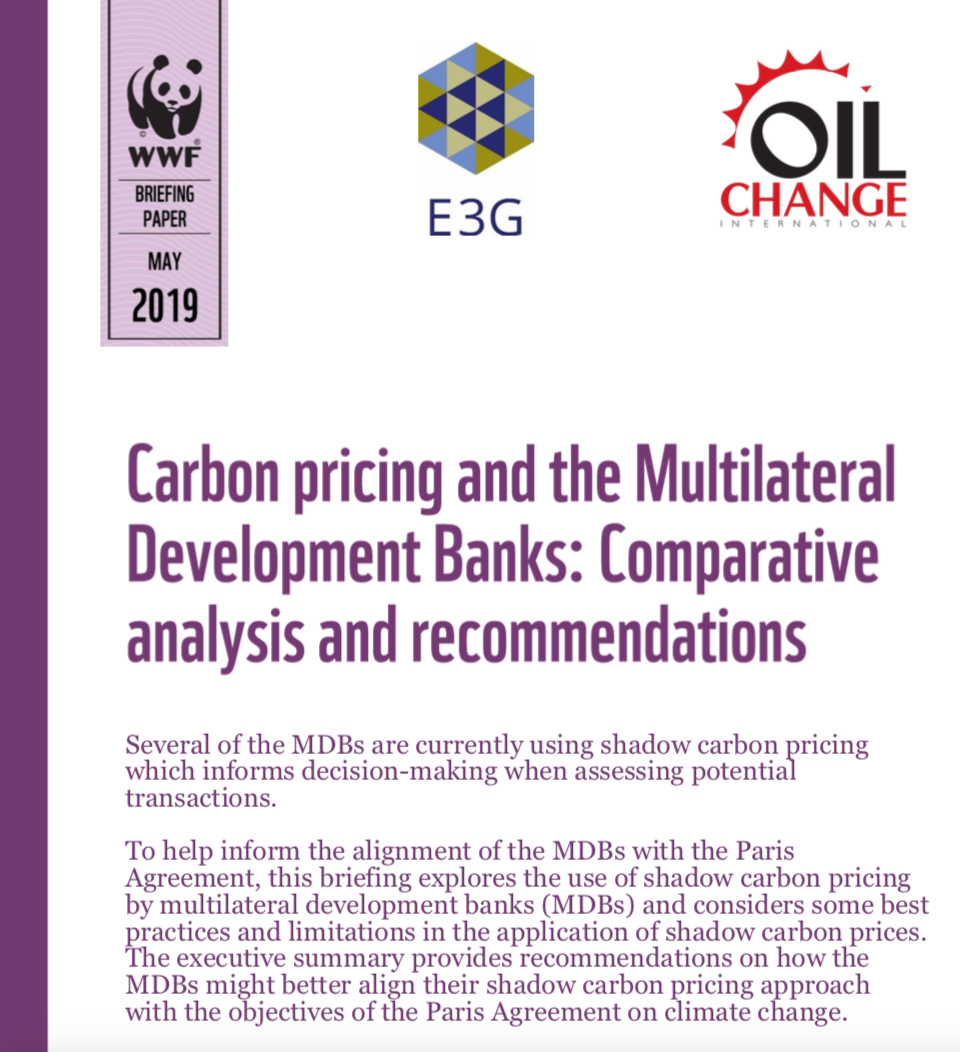
Briefing: Carbon Pricing and the Multilateral Development Banks
To help inform the alignment of the MDBs with the Paris Agreement, this briefing explores the use of shadow carbon pricing by MDBs and considers some best practices and limitations in the application of shadow carbon prices.
Briefing: Carbon Pricing and the Multilateral Development Banks: Comparative Analysis and Recommendations
Oil Change International, WWF European Policy Office, E3G — Third Generation Environmentalism
May 2019
Several of the Multilateral Developments Banks (MBDs) currently use shadow carbon pricing to informs their decision-making when assessing potential transactions. To promote the alignment of the MDBs with the Paris Agreement, this briefing explores their use of shadow carbon pricing and offers recommendations on best practices.
The briefing makes the following recommendations:
It is important to complement shadow carbon pricing with other tools to assess the alignment of investments with the Paris Climate Agreement, e.g. against compliance with steering the overall portfolio on a path to a net-zero carbon footprint. Carbon pricing on its own is not sufficient and is not a silver bullet for aligning financial flows with the Paris goals.
When updating their shadow carbon pricing approach, the MDBs should:
- Apply a shadow carbon price across all sectors and for all investments, not only for those that reduce emissions.
- Clarify the procedures on how the shadow carbon pricing is taken into account in decision making.
- Use carbon price scenarios that are at the highest end of the range of the High-Level Commission on Carbon Prices (USD 80 per ton of CO2 by 2020 and USD 100 per ton by 2030) as a screen for alignment with limiting warming below 2°C, given that the High-Level Commission recommended carbon pricing of at least this level, while also applying a second – higher – carbon price scenario to assess alignment with limiting warming to below 1.5°C.
- Disclose which discount rates it is using per category of country, and the rationale and evidence for selecting such rates.
- Ensure that the shadow carbon pricing approach includes indirect emissions even if not directly controlled by the project (“scope 3”). Their inclusion can substantially change assessment of the environmental impact and thus are material to the investment decision.Click here to download the full briefing.

